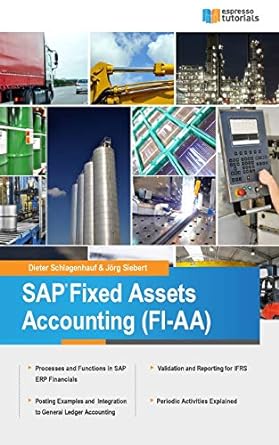Answered step by step
Verified Expert Solution
Question
1 Approved Answer
CASE 42 Upper Canada Wood Stoves This is your first assignment as a consultant with the prestigious McHenry Con- sulting firm. You want to do
CASE 42 Upper Canada Wood Stoves This is your first assignment as a consultant with the prestigious McHenry Con- sulting firm. You want to do well. Three years ago you graduated with a busi- ness degree, and last month you earned your CPA designation. McHenry hired you last week; and after getting familiarized with McHenry's business model and practices, you have been assigned to a new client, Upper Canada Wood Stoves. Upper Canada Wood Stoves was established in 1810 as a family business. It was a booming business for its first century, but during the 20th century sales declined with the replacement of wood stoves with oil, natural gas, elec- tricity, and central heating. Actually, the company nearly disappeared on more than one occasion. For the last two decades, the company produced only one model, called the Traditional Canadian wood stove. With this improvement in business, the owners saw an opportunity for a more contemporary model, called the Airtight Canadian. This new model is focused on customers using wood, at their cottages and country homes, as an alternative source of energy for cooking and heating. In each of the first three years on the market, Airtight's sales met expecta- tions. Company profits were, however, less than expected. It was unclear if the Airtight stoves were really profitable. Sales for the latest year, shown in Exhibit 1, were for 15,000 traditional stoves at $1,000 each and 1,000 airtight stoves at $3,500 each. The company had calculated profitability in its normal method, as shown in Exhibit 2. The new airtight stoves were, accordingly, an outstanding success. On the other hand, profitability of the traditional stove had become dismal, which was dif- ficult for the CEO to understand as it had been considered a successful stove up until the introduction of the airtight stove. The results, in Exhibit 2, were being questioned by the CEO. She recog nized that profitability per stove had always been determined by gross profits per stove, i.e., by dividing the company's gross profits by the number of stoves sold. The CEO had considered raising the price of the traditional stove to improve profits, but had delayed that decision for two reasons. First, the tradi- tional stove was already competitively priced in its market. Market research had Exhibit 1 Income Statements for Traditional and Airtight Stove REVENUE COST OF GOODS SOLD June 30 ($ 000s) $18,500 Direct materials 6,800 Direct labour 2,400 Factory overhead 5,800 15,000 GROSS PROFIT 3,500 SELLING AND ADMINISTRATION Selling Administration NET INCOME BEFORE TAXES 1,200 1,000 2,200 $1,300 Exhibit 2 Profitability Analysis, Per Stove Traditional Stove Airtight Stove Revenue Cost of goods sold* $1,000.00 937.50 $3,500.00 937.50 Gross margin $ 62.50 $2,562.50 * $15,000,000/16,000 indicated that price increases would be met with even larger declines in units sold. Second, she wanted to get advice on product costing and product profit- ability. In the past, with one product, it was obvious that product profitability was synonymous with the company's profits. However, with two products the CEO thought that a new method might be needed for product costing and for determining product profitability. Consequently, your consulting firm was engaged. After reviewing Exhibits 1 and 2 and understanding the CEO's concerns, you realized that more cost information is needed, and you in detail asked for and received the information contained in Exhibits 3, 4, 5. Required Use the case approach to address the CEOs requirements. Be sure to explain your analyses and recommendations. Exhibit 3 Direct Costs Per Stove Traditional Stove Direct materials Direct labour $400 8 hours of unskilled labour at $15 per hour Airtight Stove $800 24 hours of skilled labour at $25 per hour Exhibit 4 Factory Overhead, by Activity Activities Costs Cost Driver Material-related Labour-related Paint setup $1,500,000 These costs are associated with the administration and physical movement of parts around the fac- tory. The number of parts in each stove, tradi- tional and airtight, was 20 and 40, respectively. 1,300,000 Overhead costs (such as utilities, equipment depreciation, etc.) that are incurred to support the time consuming activities of cutting, welding, sanding, assembly, and packaging. 800,000 Traditional stoves were made in batches of 3,000; airtight stoves were made in batches of 200 stoves. The number of setups drove these costs. Painting costs were incurred equally per stove. Number of people employed in production drive human resource administration and benefits. 1,400,000 800,000 Painting Human resources $5,800,000 Exhibit 5 Other Overhead Activities Costs Cost Driver Selling Administrations $1,200,000 It was estimated that 10 percent of these costs were incurred for the traditional stoves, while 90 percent were incurred for the airtight stoves. $1,000,000 It was estimated that each brand-traditional and Airtight-uses 10 percent of these resources. The remaining 80 percent supports the overall company
Step by Step Solution
There are 3 Steps involved in it
Step: 1

Get Instant Access to Expert-Tailored Solutions
See step-by-step solutions with expert insights and AI powered tools for academic success
Step: 2

Step: 3

Ace Your Homework with AI
Get the answers you need in no time with our AI-driven, step-by-step assistance
Get Started


